fatty acid
Fatty acid refers to the molecule with a carboxyl group of aliphatic organic acids. In the mineral processing industry, the department of flotation use the hydroxide collector. The general formula is R-COOH, and the R group is a linear or branched akyl, alkenyl or cycloalkyl group. According to the length of carbon chain, properties varies, in addition to use as the collector, but also as a foaming agent, inhibitors and dispersants.
Natural animal and vegetable fats and oils are the main source of fatty acids. The fatty is decomposed into fatty acids or fatty acid soap(sodium soap or potassium soap) after hydrolysis or saponification, the soap generates fatty acids through acidification. Alkaline washing with some crude oil fraction, sodium naphthenate soap, by-product, can be obtained , and then naphthenic acid can be obtained from soap acidification. Mixed fatty acids or pure single fatty acids can be obtained from deeply oxidizing and separating refined kerosene, paraffin and other hydrocarbons.
According to the length of carbon chain, fatty acids customarily divided into two kinds: lower fatty acids and higher fatty acids. The number of carbon atoms in the molecule of less than ten is a lower fatty acid, and the number of carbon atoms of ten or more is a higher fatty acid. Fatty acids containing unsaturated bonds in the carbon chain(such as double bond) is called unsaturated fatty acids, while do not containing unsaturated bonds are called saturated fatty acids. Natural unsaturated fatty acids mainly includes oleic acid, linoleic acid, linolenic acid and ricinoleic acid. Natural saturated fatty acids mainly includes stearic acid, palmitic acid, cinnamic acid, lauric acid, capric acid, caprylic acid and caproic acid and the like. Higher fatty acids have higher foam stability than lower fatty acids. For example, the sodium salt of oleic acid, linoleic acid and stearic acid can form a stable foam. And the concentration of the medicament in the foam layer is higher than that in the pulp. When the concentration of different solutions of pharmaceutical agents achieves a certain value, the solution significantly formed micelles. When a single molecule or ion began to accumulate into the orderly arrangement of the molecular weight, the drug concentration is called the "critical micelle concentration."This concentration has a close relationship with the role of flotation, for example, the adsorption of sodium oleate by magnetite increased with the concentration of the agent increased, and the buoyancy also increased. However, when the concentration of the drug increased to near the critical micelle concentration, the floatability decreased significantly, even to zero.
- Structure:
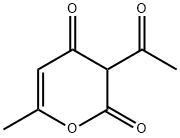
- Chemical Name:Dehydroacetic acid
- CAS:520-45-6
- MF:C8H8O4
- Structure:
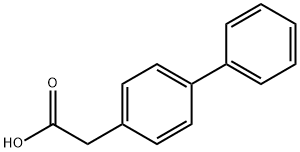
- Chemical Name:4-Biphenylacetic acid
- CAS:5728-52-9
- MF:C14H12O2
- Structure:
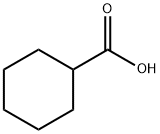
- Chemical Name:Cyclohexanecarboxylic acid
- CAS:98-89-5
- MF:C7H12O2
- Structure:
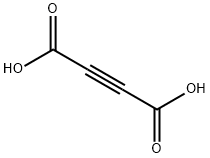
- Chemical Name:Acetylenedicarboxylic acid
- CAS:142-45-0
- MF:C4H2O4
- Structure:
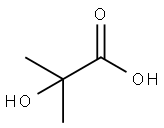
- Chemical Name:2-Hydroxyisobutyric acid
- CAS:594-61-6
- MF:C4H8O3
- Structure:
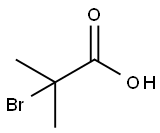
- Chemical Name:2-Bromo-2-methylpropionic acid
- CAS:2052-01-9
- MF:C4H7BrO2
- Structure:

- Chemical Name:4-Bromobutyric acid
- CAS:2623-87-2
- MF:C4H7BrO2
- Structure:
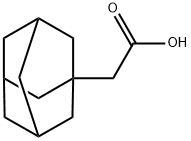
- Chemical Name:1-Adamantaneacetic acid
- CAS:4942-47-6
- MF:C12H18O2
- Structure:
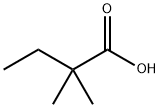
- Chemical Name:2,2-Dimethylbutyric acid
- CAS:595-37-9
- MF:C6H12O2
- Structure:

- Chemical Name:Myristic acid
- CAS:544-63-8
- MF:C14H28O2
- Structure:
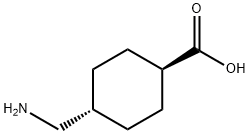
- Chemical Name:Tranexamic Acid
- CAS:1197-18-8
- MF:C8H15NO2
- Structure:
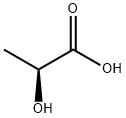
- Chemical Name:L(+)-Lactic acid
- CAS:79-33-4
- MF:C3H6O3
- Structure:
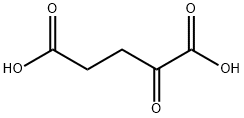
- Chemical Name:2-Ketoglutaric acid
- CAS:328-50-7
- MF:C5H6O5
- Structure:
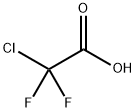
- Chemical Name:Chlorodifluoroacetic acid
- CAS:76-04-0
- MF:C2HClF2O2
- Structure:

- Chemical Name:3,3-Dimethylbutyric acid
- CAS:1070-83-3
- MF:C6H12O2
- Structure:
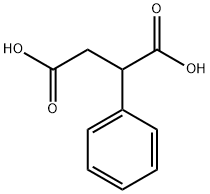
- Chemical Name:DL-Phenylsuccinic acid
- CAS:635-51-8
- MF:C10H10O4
- Structure:

- Chemical Name:1,4-Phenylenediacetic acid
- CAS:7325-46-4
- MF:C10H10O4
- Structure:

- Chemical Name:1,3-Acetonedicarboxylic acid
- CAS:542-05-2
- MF:C5H6O5
- Structure:
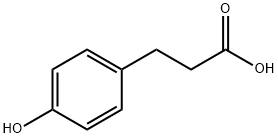
- Chemical Name:3-(4-Hydroxyphenyl)propionic acid
- CAS:501-97-3
- MF:C9H10O3
- Structure:
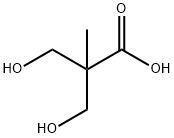
- Chemical Name:2,2-Bis(hydroxymethyl)propionic acid
- CAS:4767-03-7
- MF:C5H10O4
- Structure:
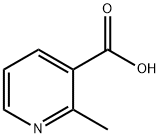
- Chemical Name:2-Methylnicotinic acid
- CAS:3222-56-8
- MF:C7H7NO2
- Structure:

- Chemical Name:2,4-Dichlorophenylacetic acid
- CAS:19719-28-9
- MF:C8H6Cl2O2
- Structure:
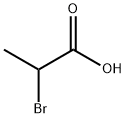
- Chemical Name:2-Bromopropionic acid
- CAS:598-72-1
- MF:C3H5BrO2
- Structure:
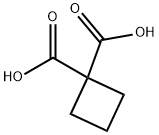
- Chemical Name:1,1-Cyclobutanedicarboxylic acid
- CAS:5445-51-2
- MF:C6H8O4
- Structure:
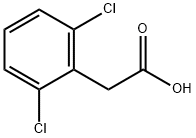
- Chemical Name:2,6-Dichlorophenylacetic acid
- CAS:6575-24-2
- MF:C8H6Cl2O2
- Structure:
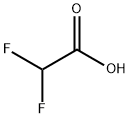
- Chemical Name:Difluoroacetic acid
- CAS:381-73-7
- MF:C2H2F2O2
- Structure:
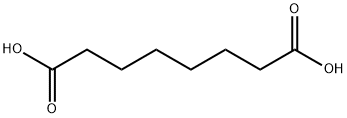
- Chemical Name:Suberic acid
- CAS:505-48-6
- MF:C8H14O4
- Structure:
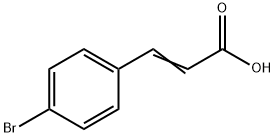
- Chemical Name:4-Bromocinnamic acid
- CAS:1200-07-3
- MF:C9H7BrO2
- Structure:
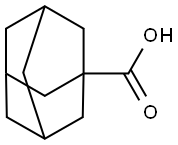
- Chemical Name:1-Adamantanecarboxylic acid
- CAS:828-51-3
- MF:C11H16O2
- Structure:

- Chemical Name:3,4-Dichlorophenylacetic acid
- CAS:5807-30-7
- MF:C8H6Cl2O2
- Structure:
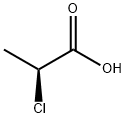
- Chemical Name:(S)-(-)-2-Chloropropionic acid
- CAS:29617-66-1
- MF:C3H5ClO2
- Structure:
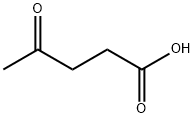
- Chemical Name:Levulinic acid
- CAS:123-76-2
- MF:C5H8O3
- Structure:

- Chemical Name:HEPTACOSANOIC ACID
- CAS:7138-40-1
- MF:C27H54O2
- Structure:
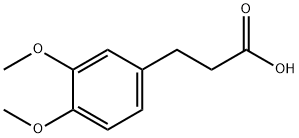
- Chemical Name:3,4-Dimethoxyhydrocinnamic acid
- CAS:2107-70-2
- MF:C11H14O4
- Structure:
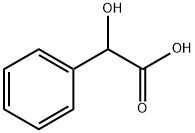
- Chemical Name:DL-Mandelic acid
- CAS:90-64-2
- MF:C8H8O3
- Structure:

- Chemical Name:Pimelic acid
- CAS:111-16-0
- MF:C7H12O4
- Structure:
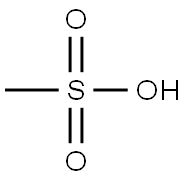
- Chemical Name:Methanesulfonic acid
- CAS:75-75-2
- MF:CH4O3S
- Structure:

- Chemical Name:2-Iodophenylacetic acid
- CAS:18698-96-9
- MF:C8H7IO2
- Structure:
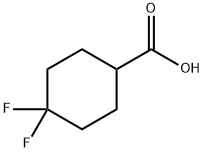
- Chemical Name:4,4-Difluorocyclohexanecarboxylic acid
- CAS:122665-97-8
- MF:C7H10F2O2
- Structure:

- Chemical Name:2-Hydroxyphenylacetic acid
- CAS:614-75-5
- MF:C8H8O3
- Structure:
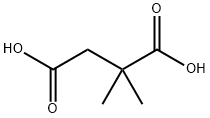
- Chemical Name:2,2-Dimethylsuccinic acid
- CAS:597-43-3
- MF:C6H10O4
- Structure:

- Chemical Name:4-(4-Methoxyphenyl)butyric acid
- CAS:4521-28-2
- MF:C11H14O3
- Structure:

- Chemical Name:4-Methoxyphenylacetic acid
- CAS:104-01-8
- MF:C9H10O3
- Structure:
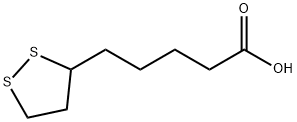
- Chemical Name:α-Lipoic Acid
- CAS:1077-28-7
- MF:C8H14O2S2
- Structure:
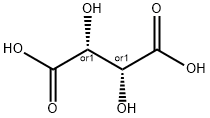
- Chemical Name:DL-Tartaric acid
- CAS:133-37-9
- MF:C4H6O6
- Structure:
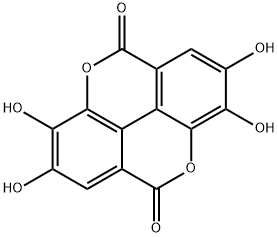
- Chemical Name:Ellagic acid
- CAS:476-66-4
- MF:C14H6O8
- Structure:

- Chemical Name:6-Bromohexanoic acid
- CAS:4224-70-8
- MF:C6H11BrO2
- Structure:

- Chemical Name:3,3-Dimethylacrylic acid
- CAS:541-47-9
- MF:C5H8O2
- Structure:
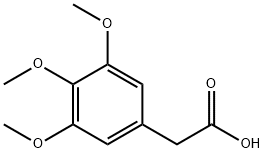
- Chemical Name:3,4,5-Trimethoxyphenylacetic acid
- CAS:951-82-6
- MF:C11H14O5
- Structure:
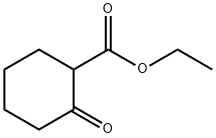
- Chemical Name:Ethyl 2-oxocyclohexanecarboxylate
- CAS:1655-07-8
- MF:C9H14O3
- Structure:

- Chemical Name:5-Bromovaleric acid
- CAS:2067-33-6
- MF:C5H9BrO2
- Structure:
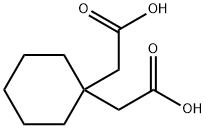
- Chemical Name:1,1-Cyclohexanediacetic acid
- CAS:4355-11-7
- MF:C10H16O4
- Structure:
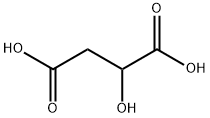
- Chemical Name:Malic acid
- CAS:6915-15-7
- MF:C4H6O5
- Structure:

- Chemical Name:Trifluoromethanesulfonic acid
- CAS:1493-13-6
- MF:CHF3O3S
- Structure:
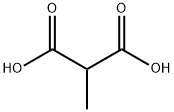
- Chemical Name:2-Methylpropanedioic acid
- CAS:516-05-2
- MF:C4H6O4
- Structure:
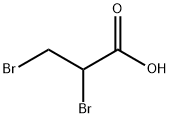
- Chemical Name:2,3-Dibromopropionic acid
- CAS:600-05-5
- MF:C3H4Br2O2
- Structure:
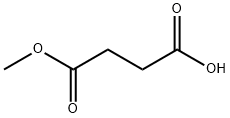
- Chemical Name:Mono-methyl succinate
- CAS:3878-55-5
- MF:C5H8O4
- Structure:
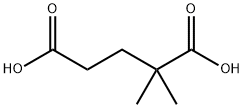
- Chemical Name:2,2-Dimethylglutaric acid
- CAS:681-57-2
- MF:C7H12O4
- Structure:

- Chemical Name:Allylacetic acid
- CAS:591-80-0
- MF:C5H8O2
- Structure:
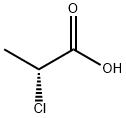
- Chemical Name:(R)-(+)-2-Chloropropionic acid
- CAS:7474-05-7
- MF:C3H5ClO2
- Structure:

- Chemical Name:3,3-Dimethylglutaric acid
- CAS:4839-46-7
- MF:C7H12O4
- Structure:

- Chemical Name:4-(TRIFLUOROMETHOXY)PHENYLACETIC ACID
- CAS:4315-07-5
- MF:C9H7F3O3
- Structure:

- Chemical Name:Thioglycolic acid
- CAS:68-11-1
- MF:C2H4O2S
- Structure:
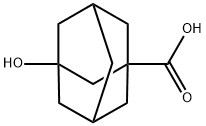
- Chemical Name:3-Hydroxy-1-AdaMantane Carboxylic Acid
- CAS:42711-75-1
- MF:C11H16O3
- Structure:
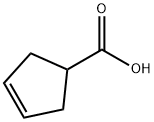
- Chemical Name:3-Cyclopentene-1-carboxylic acid
- CAS:7686-77-3
- MF:C6H8O2
- Structure:
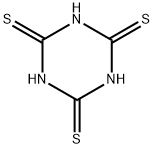
- Chemical Name:Trithiocyanuric acid
- CAS:638-16-4
- MF:C3H3N3S3
- Structure:
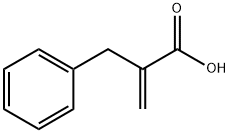
- Chemical Name:2-Benzylacrylic acid
- CAS:5669-19-2
- MF:C10H10O2
- Structure:
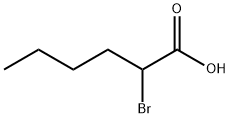
- Chemical Name:DL-2-Bromohexanoic acid
- CAS:616-05-7
- MF:C6H11BrO2
- Structure:

- Chemical Name:Cyclohexylacetic acid
- CAS:5292-21-7
- MF:C8H14O2
- Structure:
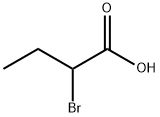
- Chemical Name:2-Bromobutyric acid
- CAS:80-58-0
- MF:C4H7BrO2
- Structure:

- Chemical Name:cis-Vaccenic acid
- CAS:506-17-2
- MF:C18H34O2
- Structure:

- Chemical Name:Methoxyacetic acid
- CAS:625-45-6
- MF:C3H6O3
- Structure:
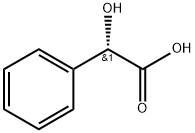
- Chemical Name:(S)-(+)-Mandelic acid
- CAS:17199-29-0
- MF:C8H8O3
- Structure:

- Chemical Name:Bromoacetic acid
- CAS:79-08-3
- MF:C2H3BrO2
- Structure:

- Chemical Name:Ethoxyacetic acid
- CAS:627-03-2
- MF:C4H8O3
- Structure:
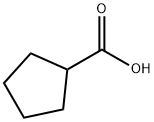
- Chemical Name:Cyclopentanecarboxylic acid
- CAS:3400-45-1
- MF:C6H10O2
- Structure:

- Chemical Name:TERT-BUTYL METHYL MALONATE
- CAS:42726-73-8
- MF:C8H14O4
- Structure:

- Chemical Name:Glutaric acid
- CAS:110-94-1
- MF:C5H8O4
- Structure:

- Chemical Name:Dodecanedioic acid
- CAS:693-23-2
- MF:C12H22O4
- Structure:
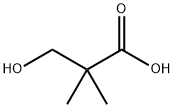
- Chemical Name:3-Hydroxypivalic acid
- CAS:4835-90-9
- MF:C5H10O3
- Structure:
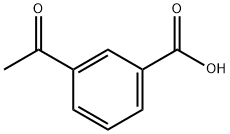
- Chemical Name:3-ACETYLBENZOIC ACID
- CAS:586-42-5
- MF:C9H8O3
- Structure:

- Chemical Name:Propiolic Acid
- CAS:471-25-0
- MF:C3H2O2
- Structure:
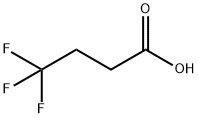
- Chemical Name:4,4,4-Trifluorobutyric acid
- CAS:406-93-9
- MF:C4H5F3O2
- Structure:
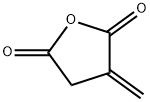
- Chemical Name:Itaconic anhydride
- CAS:2170-03-8
- MF:C5H4O3
- Structure:

- Chemical Name:Cyclopropylacetic acid
- CAS:5239-82-7
- MF:C5H8O2
- Structure:
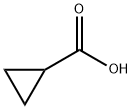
- Chemical Name:Cyclopropanecarboxylic acid
- CAS:1759-53-1
- MF:C4H6O2
- Structure:

- Chemical Name:Arachidic acid
- CAS:506-30-9
- MF:C20H40O2
- Structure:
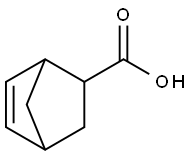
- Chemical Name:5-Norbornene-2-carboxylic acid
- CAS:120-74-1
- MF:C8H10O2
- Structure:

- Chemical Name:2-Phenylbutyric acid
- CAS:90-27-7
- MF:C10H12O2
- Structure:

- Chemical Name:N-Methyliminodiacetic acid
- CAS:4408-64-4
- MF:C5H9NO4
- Structure:
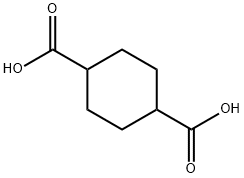
- Chemical Name:1,4-Cyclohexanedicarboxylic acid
- CAS:1076-97-7
- MF:C8H12O4
- Structure:
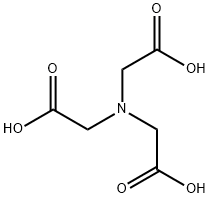
- Chemical Name:Nitrilotriacetic acid
- CAS:139-13-9
- MF:C6H9NO6
- Structure:
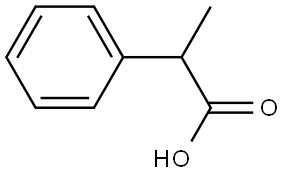
- Chemical Name:2-PHENYLPROPIONIC ACID
- CAS:492-37-5
- MF:C9H10O2
- Structure:
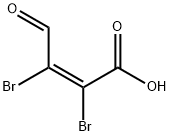
- Chemical Name:Mucobromic acid
- CAS:488-11-9
- MF:C4H2Br2O3
- Structure:

- Chemical Name:3-Methylphenylacetic acid
- CAS:621-36-3
- MF:C9H10O2
- Structure:
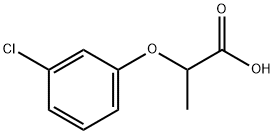
- Chemical Name:2-(3-Chlorophenoxy)-propionic acid
- CAS:101-10-0
- MF:C9H9ClO3
- Structure:

- Chemical Name:Glyoxylic acid
- CAS:298-12-4
- MF:C2H2O3
- Structure:
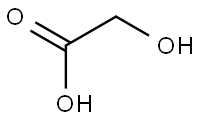
- Chemical Name:Glycolic acid
- CAS:79-14-1
- MF:C2H4O3
- Structure:
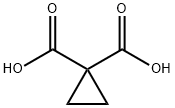
- Chemical Name:1,1-Cyclopropanedicarboxylic acid
- CAS:598-10-7
- MF:C5H6O4
- Structure:
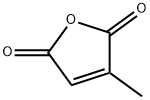
- Chemical Name:Citraconic anhydride
- CAS:616-02-4
- MF:C5H4O3